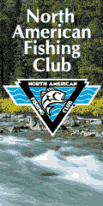
|
|||
|
Promotional Team Favorites Lodging food and more 
|
By Sam Anderson Summer walleyes are very aggressive but unfortunately for the fisherman
the lakes are so full of forage all fish have to do is inhale and they
have a meal. For this reason the best action is to fish an artificial
bait fast. It might seem strange, but the faster the better.
In fact, when you think you are trolling too fast speed up a little more.
My theory is that when an artificial bait goes whizzing by, the predator
instinct takes over and the walleye lashes out. Give that same fish
time to look over an offering and the chances are it will refuse it.
The action will remain hot in the weeds until the middle of August, maybe the first of September, then the fish will move into deeper water. Look for subtle changes in depth. A change of one to two feet could make all the difference. If there's any place with current, give it a try or if there is a deep weedbed mark it and pitch jigs to the outside edge. Again, trolling or casting crankbaits will get the job done in a hurry. In stained or dirty water that has a lot of prey, zip that crankbait by them and they won't resist the active vibrations of a wounded minnow. Here is a tip to put in your bag of tricks. When casting crankbaits in a river or lake area that has rip-rap or even sharp points with weeds and other debris, cast your bait up into the cover or rocks and crank down until you get a taught line. Then pop the crankbait off the structure into the water. Bass fisherman have been doing this for years and it does produce walleyes in stained water or low light conditions such as mornings and evenings. You might lose some lures until you get the hang of this type of fishing but it is very effective for taking some trophy fish. My next couple of casts are going to be deeper. Here, because the water tends to be deeper, I will change my presentation to more traditional casting. My cast will be ahead of the boat and I will retrieve the lure with a bait bumping approach. My next cast might be even deeper to see if the walleyes have moved out, but again it will be a normal cast and retrieve method. Under low-light conditions or in darker water, walleyes will be shallow 1 to 7 feet. But if it's bright or there's a lot of boat traffic, they move deeper. Don't forget to check your line periodically to see if it has wear from the structure. Trolling success usually depends on how well you fine-tune your presentation. Simple things that will help you trigger fish might be pumping your rod, or allowing your crankbait to stunt. Pumping a trolling rod is not a new technique. In fact, it's likely you have been using the method for years. The trick is doing it right. I have found, through experience that you should sweep your rod in a 30-degree arc with a pause at the end. The lure speeds up through the sweep and triggers the fish that there is an escaping prey. Most strikes might occur as the rod is returned to the original position because it is at the end of the fall and the lure is easily sucked into the walleyes mouth. The stunting that you might want to try is to use a deep lip crankbait like a deep diving Storm Thunder Stick and troll this in an area that has a soft bottom like mud or sand. The long bill will dive deep and stunt into the soft bottom. This will cause an erratic motion, plus stir up the bottom and fish will move in to investigate. Again, the pause surge pause motion of your rod will encourage more strikes than just trolling with a dead rod. If you happen to be on a weedy lake and the weeds are emerging try long-line trolling on top of the weeds with small lipless crankbaits, just ticking the weed tops. Now is the time to experiment - casting and trolling. Time to make crankbaits even more important in your walleye arsenal. Let me know how Speed Crank"n" has worked for you by contacting me at www.samanderson.com Fish Clix Banner Exchange Please visit these site sponsors |
||
|---|---|---|---|
